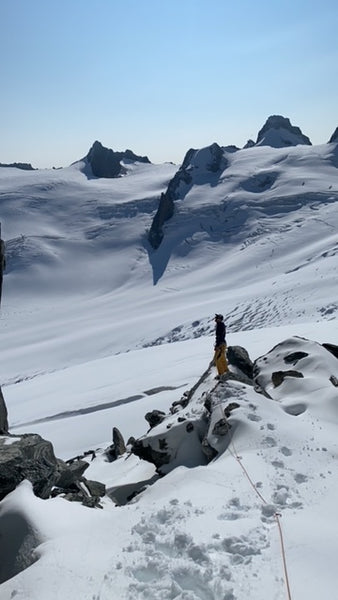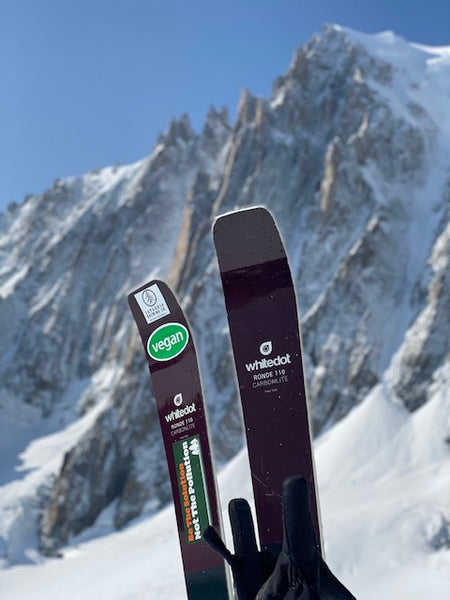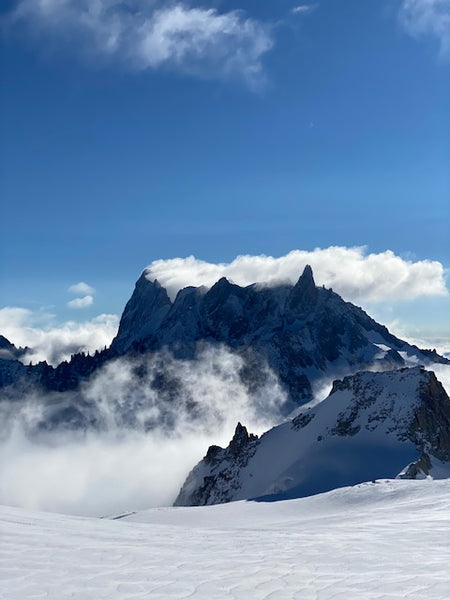FIVE IN FIVE - OWEN DAY
Five Questions in Five Minutes with Owen Day.
- - -
Owen is a Lead mountain guide, and coverts a roll in the snowsports industry that many would sell their Kidney for - he works for the Northern Escape Heliskiing operation out of British Columbia.
Owen a quick fire round of questions, what skis are you using this season, and why those?
The Carbonlite Redeemers have become my workhorse for when I’m heliskiing. I used to change skis depending on conditions but I found the Redeemers were so versatile and fun that I don’t go out the door without them. For ski touring, this season I’m on the R.108 Carbonlite - it's got all the performance of a fat ski but is super light, so awesome for big days and again just a lot of fun to ski. Both skis deliver on weight, power and agility - things that don’t always go together.
You base yourself out of North America and have done for a number of years now, what is it that keeps pulling you back?
I’m currently based out of Terrace, BC, during the winters and work at Northern Escape Heliskiing as a Lead Guide. I’ve been coming here for the last 9 years mainly because I get to work with my friends in some cool mountains and meet some interesting characters. That, and the NW coastal snowpack is a big draw.
British Columbia has so many place to explore, it’s vast so you really have the opportunity to be alone in the mountains and as remote as it can get. There’s a lot of ski touring adventures to be had on time-off. Small towns like Terrace that lack a big resort, tend to have a pretty nice vibe too, locals are happy to see visitors and the general tone is a little less powder frenzy.
You spend a lot of time guiding and dropping big lines, how did you get from skier to hitching a daily ride on a helicopter out in British Columbia?
It all started when I was working as a bartender at the La Crevasse disco in Champery, Switzerland. I was 21 years old (a full-on ski bum), on a chairlift with my boss, and he asked me what I was planning on doing the coming years. I mumbled something about becoming a heli pilot and he said “during the whole winter pilots watch guides ski powder, so..” With that mind I moved to Revelstoke, BC, worked as a bartender for a heli skiing operation and jumped in the spare seat as much as possible.
The guiding team mentored me and took me out when they were doing snow safety, digging snow pits and I was hooked pretty much. The process of becoming a certified guide is a long road with continual learning through courses and mileage in the mountains. I stopped skiing at ski resorts and just solely focussed on ski touring and learning as much as I could about avalanches. I might not have been skiing downhill as much, but I was all over finding ways up a cool mountain on a map and going for a ski tour. Each spring I’d do two big trips that were self supported, on big glaciated terrain. The longest was ‘The Great Divide’ - a 23 day traverse of the rockies that covered 350km, no huts just living in a tent and moving everyday.
If you do these style of trips you experience a wide variety of weather and avalanche conditions (and learn a lot about yourself in the process .. the good, bad and ugly!) All of that gave me the knowledge and confidence to get certified, and start dropping out of a heli with whoever’s up for the adventure. Mountain Equipment x Whitedot Eclipse Hoody

What five items do you always pack in your rucksack when you head out into the mountains?
-
In the Alps it’s pretty easy to call for a rescue by heli but in British Columbia you have to be self sufficient. My back pack has become heavier over time and I carry everything that could get me out of a jam if something happens - especially while I’m ski touring.
-
First thing is a form a communication to get backup, usually a VHF radio with pre programmed channels (if I’m going to a remote basecamp I carry a satellite phone). I make sure I have all the radio channels pre-programmed or a list of numbers to call so that during a rescue I’m not fumbling and wasting time.Next up is a small Therma-rest to insulate someone off of the snow. I watched a guy go into shock very quickly once after he dislocated his knee on a tree - getting people out of the snow and keeping them warm is crucial.
-
Along the same lines, I always have a down jacket of some sort to wrap them up/in case we have to spend the night out.
-
A lightweight tarp, this can become a rescue sled if I can't get a heli in. It also doubles as a shelter or you can wrap yourself up if you're spending a night.
-
Lastly, I usually carry a rope; length and width is dependent on what the objective is. I found I’ve used the rope a lot when trying to find entrances into lines on ridges. After a couple close calls in my early days I’m no longer into winging it, it’s nice to have some sort of backup if you've misjudged things!
What single bit of advice would you give to skiers looking to get into Freeride skiing?
As you venture out into bigger lines, take the time to do your homework (regarding the mountains, conditions and your own sense of just how big you want to go out there) and go with people you can depend on. In my earlier days I was naive and very lucky - fortunately I hooked up with a good crew who had a lot of mileage and they helped me progress and develop a solid mountain sense.



